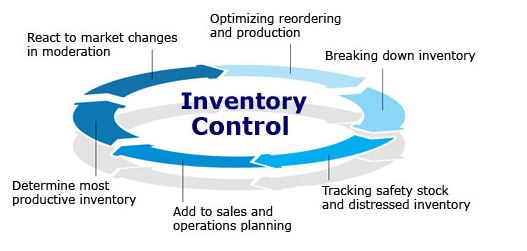
Inventory Management
Inventory management is about companies identifying which and how much stock to order and when. Tracking inventory from purchase to the sale of goods. Inventory Management identifies and reacts to trends to ensure there is always enough stock to fulfill customer orders on time.
Too much inventory is very costly since it ties up money, too little inventory will result in loss of sales. That is where we come in. We design and implement processes to make sure that orders are being shipped on time with the right flow of inventory coming in. We tackle all aspects of the supply chain from sourcing, choosing the right freight forwarder and the right fulfillment center .

Inventory Management Metrics
It is essential for any business to understand inventory metrics, enabling your business to make better decisions. Inventory touches every part of your business operations, and so with these key metrics, they act as indicators so you’re able to benchmark your business operations over a period of time Here are 5 top inventory stock metrics you need to know
Inventory Turnover
Measures the number of times inventory is sold within a period of time, typically a year. This tracks how quickly a business is replenishing inventory stock. The higher the turnover rate, the less time your inventory stock spends in storage and the associated costs of storing. A high rate may mean inadequate inventory stock and a potential loss in sales as the inventory stock levels are too low.
Inventory Stock Turnover = Total Sales / Average Value of Inventory Stock on Hand
Gross Margin
It is the percent of total sales revenue the company retains after paying the direct costs associated with producing products. The gross margin metric works hand in hand with inventory turnover. If your business is experiencing weak gross margins, you may want to focus on increasing your inventory turnover.
Gross Margin Percent = (Total Sales Revenue – Cost of Goods Sold) / Total Sales Revenue )
Item Fill Rate
Show how your business is servicing customers. It shows what orders your customers are getting on time and correctly, the lower the ratio, the weaker your inventory performance. Item fill rates are important because it affects your customer satisfaction
Item Fill Rate Percentage = Received Quantity / Ordered Quantity
Cycle Time
A cycle time is the average of the total time it takes from when an order is first requested until it is completed. Cycle time is a critical metric for setting realistic expectations with customers. Longer cycle times indicate inefficient processes, compared to shorter time cycles that suggest efficient processes.
Cycle Time = Actual Ship Date – Customer Order Date
Inventory Stock Accuracy
This pertains to knowing the stock physically actually present in your warehouse. The industry standard using this metric is measured in the way that even if a product is sold, it is not subtracted from inventory on hand until it physically leaves the warehouse, Cycle counts are a must for keeping on top of inventory stock accuracy.
Inventory Accuracy = Regular Stock Takes